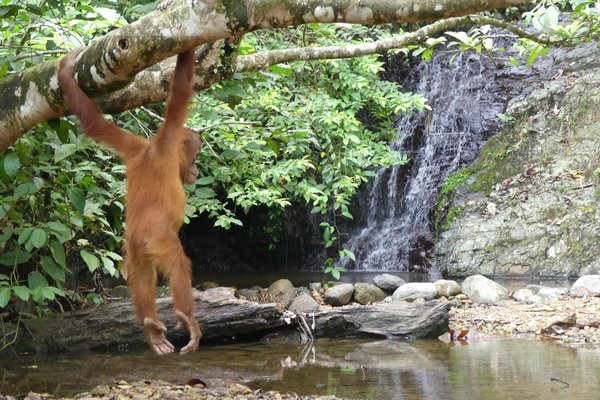Indonesia
Tropical Rainforest Sumatra
The Tropical Rainforest Heritage of Sumatra is a mountainous landscape that holds the most important remaining forests on the island.
The site comprises three national parks on the Bukit Barisan range: Gunung Leuser National Park, Kerinci Seblat National Park, and Bukit Barisan Selatan National Park. Their diverse ecosystems include volcanic, coastal and glacial features, often of great beauty. The forests hold many endangered species, including the endemic Sumatran orangutan, Sumatran tiger, rhino, elephant and Malayan sun-bear.
Community Perspective: Gunung Leuser is the most accessible of the parks, and its Bohorok entrance is suited for day visits. Clyde stayed for 4 nights camping (“Sleeping in the tropical rainforest/jungle was a nightmare”) inside the park and encountered over a dozen orangutans who were once rescuers. Timonator ponders the ethical aspects of the tours conducted from Bukit Lawang.
Site Info
Official Information
- Full Name
- Tropical Rainforest Heritage of Sumatra (ID: 1167)
- Country
- Indonesia
- Status
-
Inscribed 2004
Site history
History of Tropical Rainforest Sumatra
- 2011: In Danger
- four proposed roads, ongoing encroachment, poaching and illegal logging
- 2004: Inscribed
- Inscribed
- In Danger
- four proposed roads, ongoing encroachment, poaching and illegal logging Since 2011
- Type
- Natural
- Criteria
- vii
- ix
- x
Links
- UNESCO
- whc.unesco.org
- Official
-
- gunungleuser.or.id — Taman Nasional Gunung Leuser
All Links
UNESCO.org
- whc.unesco.org — whc.unesco.org/
Official Website
- gunungleuser.or.id — Taman Nasional Gunung Leuser
News Article
- Sept. 19, 2025 tanahair.net — Changes to the world heritage forest boundaries for geothermal development in Sumatra
- Dec. 3, 2023 news.mongabay.com — Smallholders and loggers push deeper into Sumatra’s largest park
- Sept. 1, 2019 news.mongabay.com — A tiger refuge in Sumatra gets a reprieve from road building
- Oct. 24, 2017 phys.org — Sumatran tigers on path to recovery
- March 11, 2017 thejakartapost.com — Mount Leuser National Park fights back against illegal plantations
- Sept. 2, 2015 newswise.com — Forest Rangers Arrest Six Bird Poachers in Gunung Leuser National Park
Community Information
- Community Category
- Natural landscape: Forest
Travel Information
Recent Connections
-
Perfect Inscriptions
2004 -
Edible bird's nest collection
"Resource management: to ensure biodive… -
Extension Supported
"Encourages the State Party to consider…
Connections of Tropical Rainforest Sumatra
- Individual People
-
-
Sir Stamford Raffles
The Rafflesia Arnoldii produces the largest individual flower on Earth. Its range is limited to the rain forests of Sumatra and Borneo. Wiki states it to be "rare and fairly hard to locate" and "how many of these plants still survive is unknown" The species was "discovered" in 1818 by a botanical expedition in West Sumatra (not within the inscribed area) led by a Thomas Arnold who was lead botanist for the East India company - Raffles was present on the expedition in his then role of Governor-General of Bencoolen on Sumatra. The name given honoured both the finder and his patron. Its presence within the nominated parks is highlighted in the justification under Criteria x.
-
- Geography
-
-
Volcanic Cone
Gunung Kerinci -
Indian Ocean
-
Recently Active Volcanoes
Mount Kerinci in Kerinci Seblat National Park. Last eruption in June 2, 2013 (eruption with 600 m (1,969 ft) spewed black smoke)See en.wikipedia.org
-
World's most prominent mountains
Mt Kerinci 33th most prominent (3805 m)
-
- Trivia
-
-
Total Solar Eclipse since Inscription
8/9 March, 2016 -
Cryptozoology
Orang Pendek (sightings in Kerinci Seblat National Park). "Consensus among witnesses is that the animal is a ground-dwelling, bipedal primate that is covered in short fur and stands between 80 centimetres (31 in) and 150 centimetres (59 in) tall." (Wiki)
-
- History
-
-
Palaeolithic and Mesolithic
Tiangko Panjang Cave - Records of life have been discovered in Tiangko Panjang cave within KSNP area., dating up to 10,000 years ago (AB ev)
-
- Ecology
-
-
Turtles and tortoises
leatherback turtle, green turtle, spiny terrapin, Malayan giant turtle and Malayan flatshelled turtle
-
Rainforests
-
Critically endangered fauna species
Sumatran orangutan - "A survey in 2004 estimated that around 7,300 Sumatran orangutans still live in the wild" (wiki), & Sumatran Rhino (30 remaining, IUCN), & Helmeted Hornbill (Gunung Leuser Avibase). -
Elephants
Asian Elephant (Sumatran elephant) -
Peat
"the site contains significant and important natural habitats, ranging from coastal, lowland, hill, sub-montane, peat swamp, ......." (Nom File) -
Rhino habitat
Sumatran rhinoceros at GNLP (UNEP-WCMC) -
Otters
smooth-coated otter (UNEP-WCMC) -
Strepsirrhini
slow loris -
Tapirs
Malayan tapir -
Refugium
"All three nominated sites would undoubtedly have been important climatic refugia for species over evolutionary time and have now become critically important refugia for future evolutionary processes" (IUCN eval) -
Over 300 bird species
"some 580 bird species of which 465 are resident and 21 are endemics." (AB) -
Tiger habitat
-
- Damaged
-
-
Poaching
"A combination of economic and social issues, combined with improved accessibility has intensified poaching of wildlife, in particular of elephants, tigers and rhinoceroses"See whc.unesco.org
-
- World Heritage Process
-
-
Extensions on Tentative List
Tropical Rainforest Heritage of Sumatra – Significant Boundary Modification -
Natural sites filling gaps cited by IUCN
tropical montane forests of Sumatra, Philippines and Sulawesi -
Extension Supported
"Encourages the State Party to consider the extension of the World Heritage property to include other Leuser Ecosystem protected lands surrounding Gunung Leuser National Park, particularly the Singil Barat Wildlife Reserve, Langsa lowlands and foothills, Aceh Highlands and Tapaktuan lowlands" (Decision 28 COM 14B.5) -
Perfect Inscriptions
2004
-
- Human Activity
-
-
Coffee
Bukit Barisan Selatan NP. "The park has recently lost 20% of its forests to illegal agriculture .... WWF found that more than 450 km2 of park land is being used for growing coffee, and the organisation is now working with multinational coffee companies (including Nestle) to help them avoid buying illegally grown coffee. -
Edible bird's nest collection
"Resource management: to ensure biodiversity richness while allowing sustainable harvest of certain traditional resources within the Park by means of zonation and co-management, and to prevent or control the exploitation of non renewable resources. Activities:.............. (3) managing harvest of swiftlet nests," (nom file) e.g Bukit Barisan NP ..."There is widespread local trade in edible swiftlet nests from the area. The Ministry of Forestry has issued collecting permits for sustainable exploitation at two sites, but most caves in the region are not owned and nests are freely collected and sold"
-
- WHS on Other Lists
-
-
ASEAN Heritage Parks
Kerinci Seblat National Park -
World Biosphere Reserves
Gunung LeuserSee www.unesco.org
-
Biodiversity hotspot
Sundaland -
IUCN Conservation Outlook Assessment Critical
-
World Heritage Forest Programme
-
WWF Global 200
Terrestrial, Tropical and Subtropical Moist Broadleaf Forests: (26) Sumatran Islands Lowland and Montane Forests (subregion Sumatran montane rain forests)See web.archive.org
-
Located in a TCC Territory
Sumatra -
Centres of Plant Diversity
SEA41 Gunung Leuser NP & SEA42 Kerinci-Seblat NP - "Collectively, the three sites include more than 50% of the total plant diversity of Sumatra"
-
- Literature & Film
-
-
Featured in the Go Jetters
Series 2: Episode 4: Rainforests of Sumatra
-
News
- tanahair.net 09/19/2025
- Changes to the world heritage fore…
- news.mongabay.com 12/03/2023
- Smallholders and loggers push deep…
- news.mongabay.com 09/01/2019
- A tiger refuge in Sumatra gets a r…
Recent Visitors
Visitors of Tropical Rainforest Sumatra
- Alberto Rodriguez Gutierrez
- AlexSchedel
- Atila Ege
- basementonline
- Bernard Joseph Esposo Guerrero
- Bill Maurmann
- Cheryl
- Clyde
- Elisabeth Fransisca Situmorang
- Erik Jelinek
- Francky D'Hoop
- Frederik Dawson
- Gabbro
- Gernot
- Iain Jackson
- Ivan
- Jacob Otten
- Jarek Pokrzywnicki
- Jezza
- Joel on the Road
- Kedp2023
- Ken DJ
- Kurt Lauer
- Lars Bogstad
- Michael Novins
- Morodhi
- NH1984
- Nihal Ege
- Paul Schofield
- Potsdamer
- Ralf Regele
- Rick Ohm
- Roman Bruehwiler
- Sandra!
- saraleonela
- Shandos Cleaver
- Tammy Gouldstone
- Thomas Buechler
- Timonator
- Toxicologist
- Truls Brekke
- Wojciech Fedoruk
- wolfboy
- Zoë Sheng
Community Reviews
Show full reviews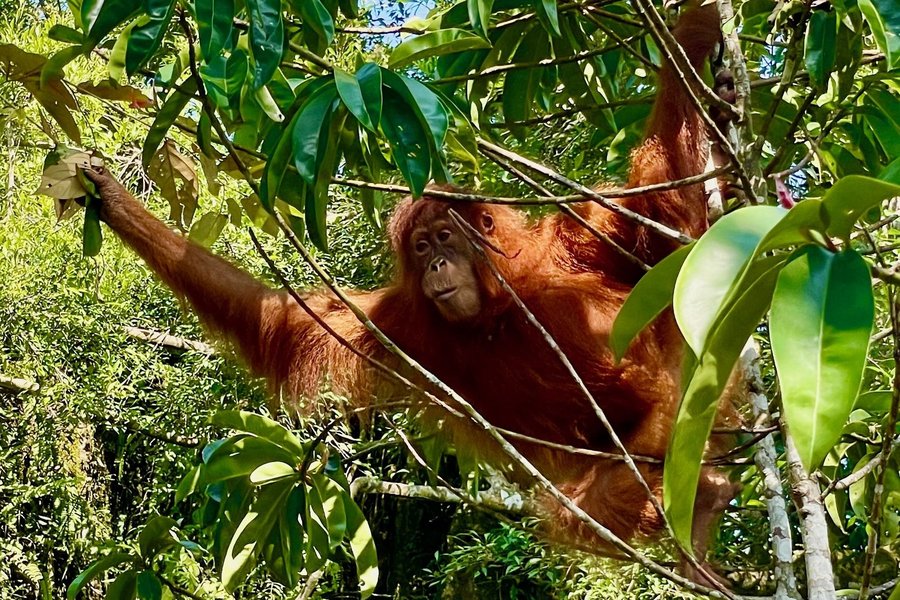
We've long been meaning to visit the Sumatran Tropical Rainforest WHS - after all, it's a relatively "close" site for Australians, but we never quite managed to plan a visit. After all, the site covers a huge expanse, with three national parks included, and a lot of options for a visit. Last year we almost booked at visit to Gunung Leuseur NP, the most touristed option and not too far from Medan Airport, but then realised our dates overlapped with Eid al-Fitr, when our selected tour operator closed.
We finally made a booking for mid-2025 with the same tour operator (Sumatra EcoTravel), choosing to book a two day trek in the jungle, to up our chances of spotting orang-utans, sandwiched between two nights staying at their cottages in Bukit Lawang, the touristy gateway town. The high season is June to September, coinciding with the "dry" season, hopefully lessening our chances of leeches. (Although an afternoon storm is still likely!)
While the camp where we stayed overnight was rustic, we were spoiled by our beautiful riverside room, complete with balcony hammock, and the plentiful food provided (especially the colourful fruit trays!) After the long transfer from Medan Airport, we relaxed on the balcony for the afternoon, and were feeling energetic at the departure of our trek the next morning.
There was previously an orang-utan rehabilitation centre at Bukit Lawang, that closed 20 years ago, meaning it's highly likely to spot semi-wild orang-utans nearby, even on a day walk. We spotted our …
Keep reading 0 comments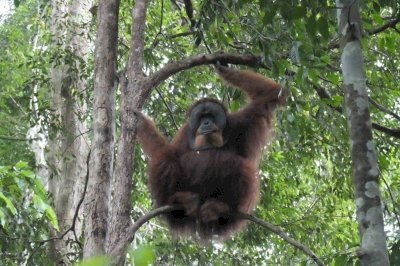
The Gunung Lauser National Park is special as it is one of the few places on earth where you can see the Orang Utan (ind. for Man of the Forest) live wild. However due to the rehabilitation program the Orang Utans seen very adapted to humans and because tourist groups leave their fruit snacks along the hiking paths there is a natural attraction for the apes to come close. We saw eleven in total incl. male with typical face and many mother/ child duos. On day 2 and 3 of our hike we were also alone with two orang utans each which was amazing. Of course it's not all about Orang Utan in this tropical rainforest, but it surely is the highlight. We also saw black gibbons, white gibbons, long tail makakes, Thomas Leaf monkeys (endemic to Sumatra) and pigtail makakes. We didn't see any birds despite watching for them. We heard a few though. You can also walk in 7 or 8 days through the forest from Bukit Lawang until Kutacane and go back by Bus in about 15 hours via Medan or in about 20 days until Gunung Lauser mountain and raft back to Bukit Lawang. With at least 7 days there is the option to see wild elephants. Also our guide has seen a tiger once in his career of 7 years and about 7 times a python. He had never seen rhinos or nocturnal leopards. As all the other tourists we went to Bukit Lawang however …
Keep reading 0 comments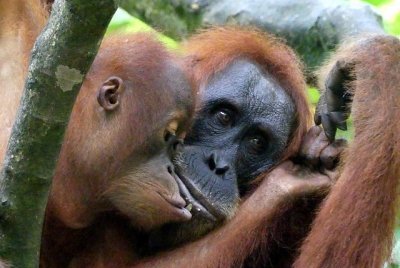
I visited this WHS in September 2018 spending 4 nights in and about the Gunung Leuser National Park in Sumatra Island. After a long and bumpy ride from Medan Airport to Bukit Lawang (and a cheap overnight stay), we left for three days to explore the tropical rainforest of Gunung Leuser NP, camping at different places within the inscribed NP.
Our main goal was to admire the Sumatran Orangutans in the wild and we got to see more than a dozen including alpha males, females, young as well as newly born orangutans. The orangutan sanctuary was closed down and the few orangutans kept there were released as the number of orangutans grew enough over the years. We were lucky to spot a female orangutan with her baby around sunset just before she prepared their night nest high up in the trees just above our camping site. Early in the morning, they played together at the small waterfall nearby while we had breakfast which was an unforgettable moment.
Apart from the orangutans we also spotted several white handed gibbons, black gibbons, long-tailed macaques, pig-tailed macaques, Thomas' leaf monkeys, silvery lutungs, Sunda slow loris, monitor lizards, jungle peafowls, Salvadori's pheasants, Roll's partridges, Sumatran Laughingthrushes, Sunda Laughingthrushes, Rueck’s Blue-Flycatcher and countless butterflies.
Even though the Gunung Leuser NP's size is mindboggling (almost 8000km2), our nature guide was very knowledgeable in tracking and spotting different fauna species (mostly monkeys and primates) but also sun bear claw marks on different trees. Even …
Keep reading 0 comments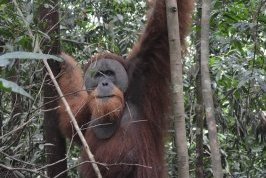
In July 2018, I spent a few days at the Jungle Inn in Bukit Lawang, the gateway to Gunung Leuser National Park, probably the best place to see Sumatran orangutans, where I spent two days hiking in the national park and saw more than a dozen orangutans over both days, ranging from an infant being carried by its mother to a large male.
Keep reading 0 comments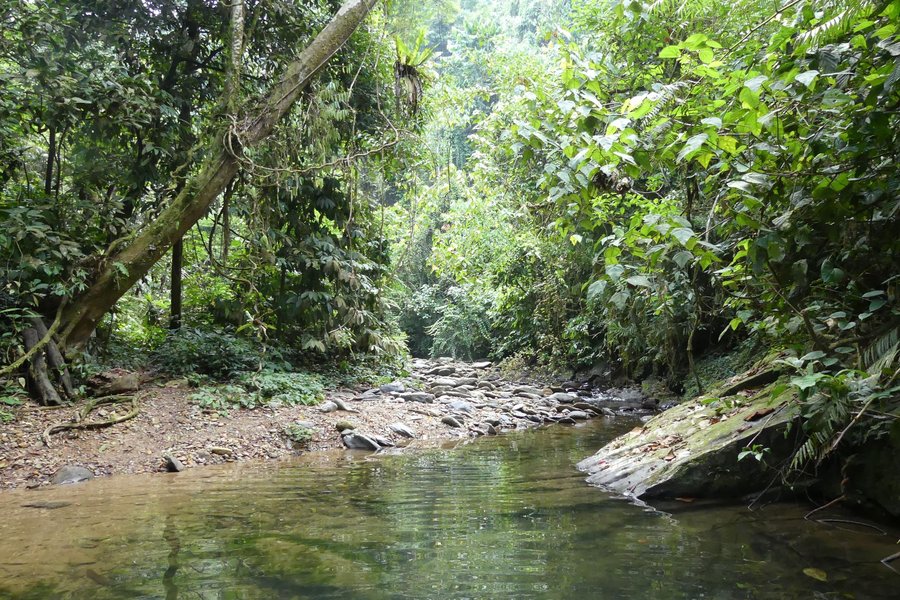
I went to Mt. Kerinci as part of Kerinci Seblat National Park, as part of the series of rainforest and mountain range in Sumatra Island in Indonesia.
The location is quite far from the closest airport. It is 7-8 hrs drive from Minangkabau International Airport in Padang, West Sumatra.
If you are a hiker/mountaineer, it is definitely worth a visit (and hike).
Keep reading 0 comments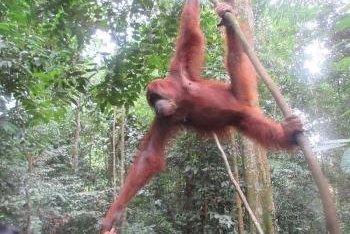
Out of all three national parks composing this WHS, perhaps the easiest one to visit is Gunung Leuser on the border of Aceh and North Sumatra Province. Visitors center is in Bohorok, which is located around 3.5 hours by car from Medan airport (from the city of Medan it should take around 3 hours). There are no rental cars available in Medan airport so you either get a taxi or go to the city of Medan and rent a car there. I took a taxi and for a whole day I paid 1.2m INR (around 65-70 EUR). The road is very bad and leads through very populated areas, so drivers must be very careful.
I had only 4 hours to stay in Bohorok, so I had to arrange my visit quickly. It is not a problem at all as foreign visitors (quite many for this part of Indonesia) are immediately surrounded by guides. I was offered with 3-hour trekking which costs 35 EUR per person, 3 people minimum. We agreed for 50 EUR for just me, park fee included.
Of course I desired to see the main attraction of Gunung Leuser – Sumatran orangutans, but the guide realistically told me that the chances to see them during 3-hour trekking are not higher than 30%. Usually people stay there at least overnight or for a couple of days to maximize the chance to see these apes. The park offers long trekkings with a few nights in the jungle, so the participants …
Keep reading 0 comments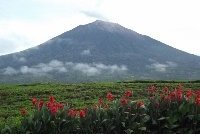
Despite external forces of corruption there are still people in Sumatra that are dedicated to halting further encroachment by farmers, loggers and poachers on the remaining areas of tropical rainforest.
I met rangers in the Gunung Leuser National Park who care for the burgeoning number of orang-utans in their care. This notwithstanding that the forest can no longer sustain the numbers now there, requiring the rangers to supplement their food supply.
In the Kerinci Seblat National Park there are similar individuals trying to protect the remaining wildlife and flora, all the time having the forest encroached on by farmers, hunters and loggers.
I visited these two National Parks as part of a tour of Sumatra that also took in visits to Berestagi, Lake Toba, Bukittinggi and Padang.
Keep reading 0 comments
This WHS is spread out all over Sumatra. All jungle national parks look the same to me and so to find a reason to check this WHS off your list is to get to Medan in North Sumatra and visit the Bohorok Orangutan rehabilitation center, a two hour drive from Medan. Orangutan babies are collected illegally by killing their mothers. They are then sold as pets. The problem is that when the Orangutans grow up and become unmanageable, they are abandoned. The rehab center is to save these animals and train them to survive in the wild with some supplemental milk and food. Orangutan rehab centers exist also in Borneo but this site is more primitive and so much more natural then others I have visited. I visited this site in August 1994 and also nearby Lake Toba and the native villages around the lake.
Bohorok is part of Gunung Leuser National Park.
Keep reading 0 comments
